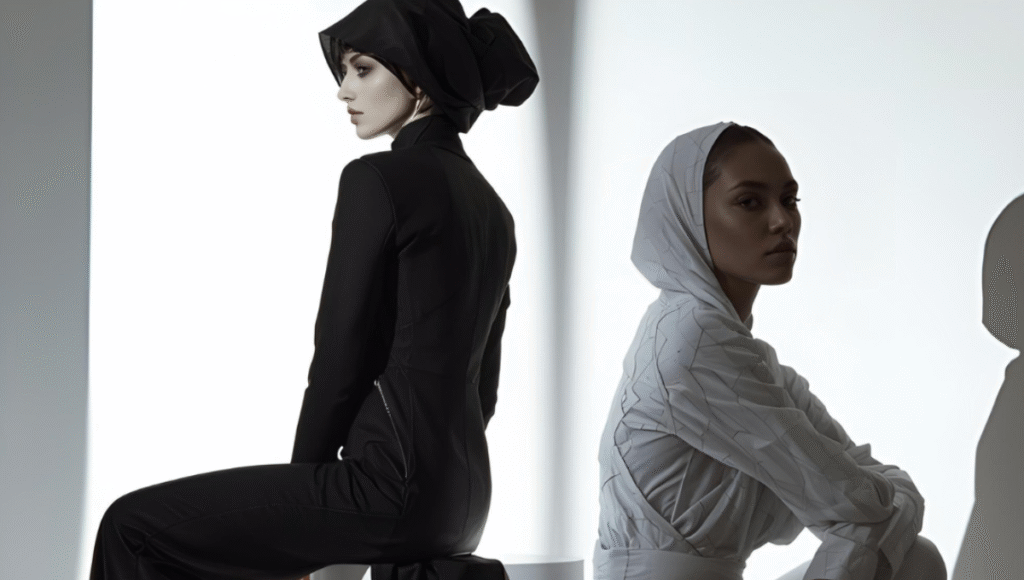Avant-garde fashion stands as a testament to the limitless boundaries of creativity, innovation, and artistic expression within the realm of clothing and style. Derived from the French term “avant-garde,” meaning “advance guard” or “vanguard,” this fashion movement challenges conventional aesthetics and norms, often serving as a platform for experimental artistry and radical ideas. It transcends mere clothing, transforming into a form of visual and cultural discourse that questions societal standards, explores new materials, and redefines the very notion of beauty.
Origins and Historical Context
Roots in Art and Culture
The roots of avant-garde fashion can be traced back to early 20th-century artistic movements such as Dadaism, Surrealism, and Constructivism. Artists and designers sought to break away from traditional forms, embracing chaos, abstraction, and unconventional materials. This spirit of rebellion gradually seeped into fashion, inspiring designers to create pieces that defied norms.
Post-World War II Evolution
After World War II, the fashion landscape experienced significant shifts. The minimalist and utilitarian aesthetics of the post-war period gave way to more experimental approaches in the 1960s and 1970s. Designers like André Courrèges, Paco Rabanne, and Yohji Yamamoto pioneered futuristic, architectural, and deconstructed styles, laying the groundwork for avant-garde fashion.
Characteristics of Avant-Garde Fashion
Innovation and Experimentation
At its core, avant-garde fashion is characterized by innovation. Designers experiment with unconventional materials such as plastics, metals, and recycled objects. They also explore new construction techniques, including deconstruction, asymmetry, and exaggerated proportions.
Artistic and Conceptual Focus
Avant-garde pieces often serve as wearable art, emphasizing conceptual ideas over commercial appeal. The designs challenge perceptions of beauty, gender norms, and societal standards.
Dramatic Aesthetics
Elements like oversized silhouettes, exaggerated accessories, unusual textures, and bold color palettes are common. The goal is to create visually striking pieces that evoke emotion and provoke thought.
Non-Conformity and Provocation
Avant-garde fashion intentionally disrupts mainstream trends. It often aims to provoke discussion about identity, politics, and cultural issues.
Influential Designers and Brands
Key Pioneers
- Yohji Yamamoto: Known for his avant-garde silhouettes, flowing fabrics, and monochromatic palettes, Yamamoto challenges traditional notions of femininity and masculinity.
- Rei Kawakubo (Comme des Garçons): Famous for deconstructed and abstract designs that blur gender lines and question aesthetic norms.
- Issey Miyake: Innovator in fabric technology and pleating techniques, creating sculptural and functional garments.
- John Galliano: Renowned for theatrical runway shows and dramatic, narrative-driven collections.
Contemporary Innovators
- Rick Owens: Recognized for dark, gothic-inspired aesthetics with sculptural shapes.
- Demna Gvasalia (Balenciaga): Merges streetwear with high fashion, pushing boundaries through provocative designs.
- Iris van Herpen: Combines technology, art, and fashion, creating futuristic, intricate pieces through 3D printing.
Cultural Impact and Significance
Fashion as Art
Avant-garde fashion blurs the line between clothing and art, often showcased in museums and art galleries. It elevates fashion to a form of cultural commentary and societal critique.
Influence on Mainstream Fashion
Many elements of avant-garde aesthetics trickle down into mainstream fashion, influencing editorial shoots, runway shows, and even commercial collections. Designers incorporate experimental touches to add edge and innovation.
Social and Political Commentary
Avant-garde fashion frequently addresses issues like gender fluidity, environmental sustainability, and political unrest. It provides a platform for marginalized voices and challenges societal norms.
Avant-Garde Fashion in Popular Culture
Runway Shows and Fashion Weeks
Major fashion weeks, including Paris, Milan, and New York, often feature avant-garde collections that set trends and inspire other designers.
Celebrities and Influencers
Artists like Lady Gaga, Björk, and Pharrell Williams have embraced avant-garde styles, elevating its visibility to wider audiences.
Media and Digital Platforms
Documentaries, fashion magazines, and social media platforms play a vital role in disseminating avant-garde ideas, making them accessible beyond high fashion circles.
Future Trends and Developments
Technological Integration
Advances in 3D printing, wearable technology, and sustainable materials promise to revolutionize avant-garde design, making it more innovative and eco-friendly.
Sustainability and Ethical Fashion
As environmental concerns grow, avant-garde designers are exploring biodegradable fabrics, upcycling, and ethical production methods.
Inclusivity and Diversity
The movement continues to embrace gender fluidity, body positivity, and cultural diversity, challenging traditional standards of beauty.
Cross-Disciplinary Collaborations
Collaborations between fashion, art, architecture, and technology are likely to produce groundbreaking designs that redefine avant-garde fashion further.
Conclusion
Avant-garde fashion remains a vital and dynamic force within the global fashion industry. It embodies artistic freedom, innovation, and social critique, continually pushing the boundaries of what clothing can represent. As technology advances and societal norms evolve, avant-garde fashion will undoubtedly continue to serve as a powerful platform for experimentation, expression, and cultural commentary. It challenges us to see fashion not just as a means of adornment but as a compelling form of contemporary art that reflects and shapes our world.

